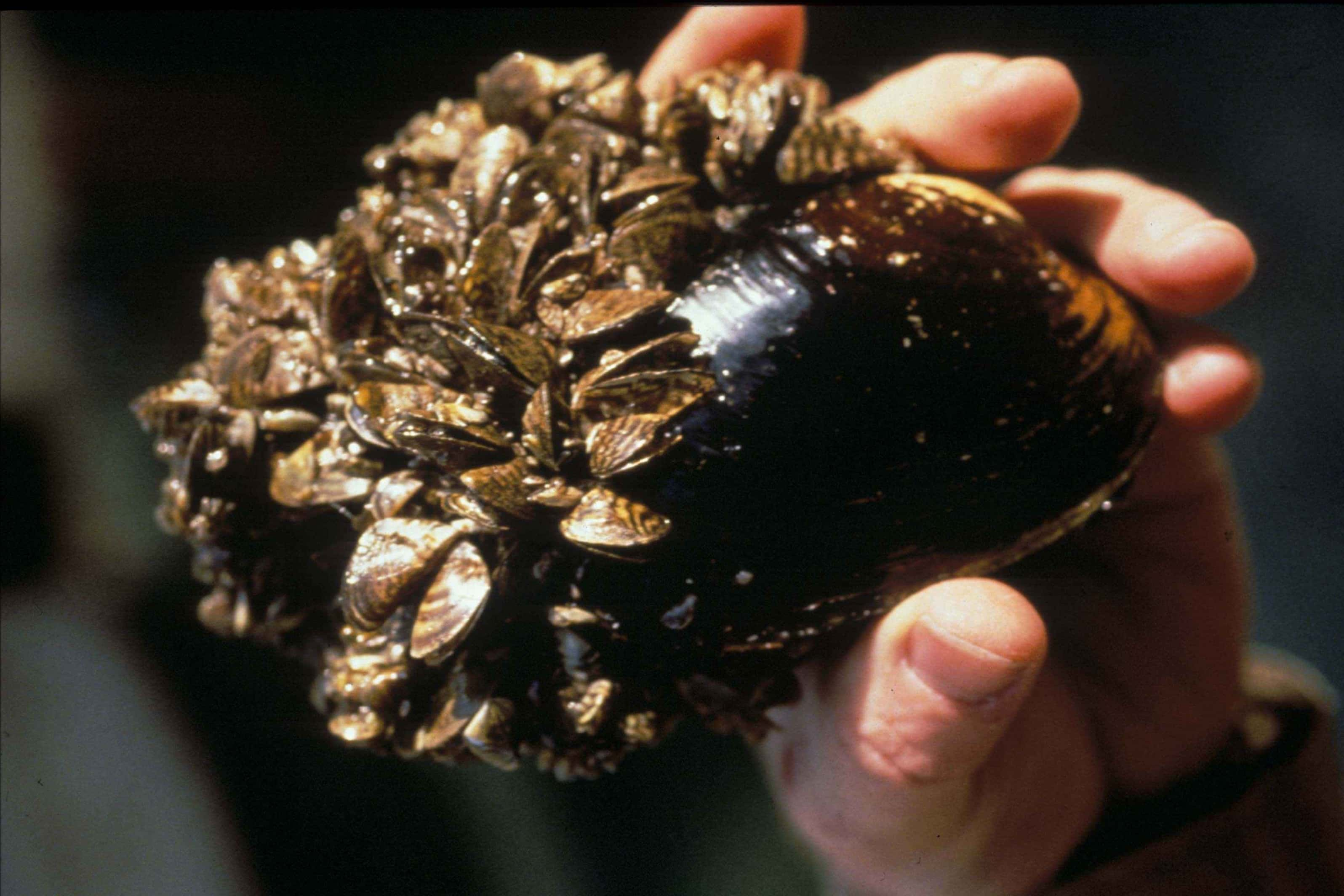
LAMOURE, N.D. (G&F) – The North Dakota Game and Fish Department confirmed the presence of invasive zebra mussels in Lake LaMoure after a local game warden reported the finding earlier this week.
Aquatic nuisance species coordinator Ben Holen said follow-up sampling confirmed well-established populations of zebra mussels of various ages, especially near the dam. It is unknown how the small, sharp-shelled mussels were introduced, and there is no known method to completely rid a lake once they become established.
The 430-acre lake, located in LaMoure County in southeastern North Dakota, is a popular boating and fishing destination.
Holen reminds water recreationists that everyone plays a role in stemming the spread of mussels to uninfested lakes. “This situation shows how important it is for boaters, anglers, swimmers and skiers to be aware of aquatic nuisance species and to take precautions to prevent their spread,” he said.
Prevention is the best way to avoid spreading ANS. They often travel by hitchhiking with unsuspecting lake-goers. “Always clean, drain and dry boats and other equipment before using another lake,” Holen said. “Also, don’t transfer lake water or live fish to another body of water. This can help stop the spread of not only zebra mussels, but most aquatic nuisance species that may be present.”
Since Lake LaMoure eventually flows into the James River above the city of Oakes, Game and Fish Department staff will also increase zebra mussel surveillance on the lower James. In addition, for the remainder of the summer, ANS watercraft inspections will increase at Lake LaMoure.
Lake LaMoure, and the James River in Dickey County, are now considered Class I ANS Infested waters. They join Lake Ashtabula, lower portion of the Sheyenne River, and the Red River as zebra mussel infested waters. Emergency rules will go into effect immediately to prohibit the movement of water away from the lake, including water for transferring bait. Notices will be posted at access sites.
Zebra mussels are just one of the nonnative aquatic species that threaten our waters and native wildlife. After using any body of water, water recreationists must follow North Dakota regulations:
Remove aquatic vegetation before leaving the water access and do not import into North Dakota.
Drain all water before leaving the water access.
Remove drain plugs and devices that hold back water and leave open and out during transport.
Do not import bait. For Class I ANS Infested waters, bait cannot be transported in water. In all other areas, bait must be transported in a container that holds 5 gallons or less. Remember that it is illegal to dump unused bait on shore or into the lake.
In addition to North Dakota regulations, the Department strongly recommends that all equipment be cleaned, drained and dried every time it is used.
Clean – remove plants, animals and excessive mud prior to leaving a water access
Drain – drain all water prior to leaving a water access
Dry – allow equipment to dry completely before using again or disinfect. This includes boat docks and boat lifts brought from other waters/states.
For more information about ANS in North Dakota, visit https://gf.nd.gov/ans.
ABOUT ZEBRA MUSSELS
Zebra mussels are dime-sized mollusks with striped, sharp-edged, two-part shells. They can produce huge populations in a short time and do not require a host fish to reproduce. A large female zebra mussel can produce 1 million eggs, and then fertilized eggs develop into microscopic veligers that are invisible to the naked eye. Veligers drift in the water for at least two weeks before settling out as young mussels, which quickly grow to adults and reproduce within a few months.
After settling, zebra mussels develop byssal threads that attach their shells to submerged hard surfaces such as rocks, piers and flooded timber. They also attach to pipes, water intake structures, boat hulls, propellers and submerged parts of outboard motors. As populations increase, they can clog intake pipes and prevent water treatment and electrical generating plants from drawing water. Removing large numbers of zebra mussels to ensure adequate water flow can be labor-intensive and costly.
Zebra mussels are native to the Black and Caspian seas of western Asia and eastern Europe and were spread around the world in the ballast water of cargo ships. They were discovered in Lake St. Clair and the Detroit River in 1988 and quickly spread throughout the Great Lakes and other rivers, including the Mississippi, Illinois, Ohio, Tennessee, Arkansas and Hudson. They were first discovered in North Dakota in 2015 in the Red River. Moving water in boats has been identified as a likely vector, as has importing used boat lifts and docks.
